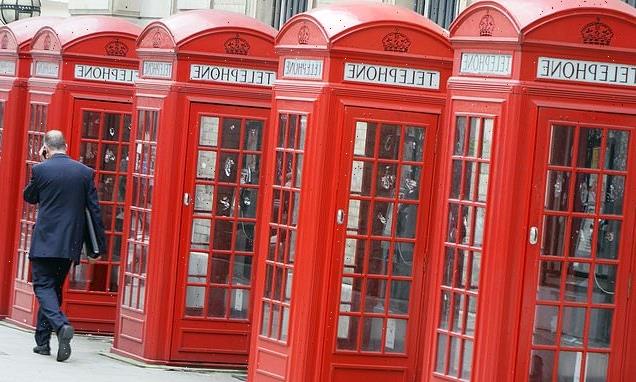More than 1,400 public payphones will be protected from removal in areas with poor mobile signal or high accident rates
- At least 1,400 payphones are to be safeguarded from removal, said OFCOM
- Payphones in areas with poor mobile signal or high accident rates with be saved
- Experts say many public payphones are still needed by their local community
Public payphones in areas with poor mobile signal or high accident rates will be safeguarded from removal.
The new rules, which came into force on Wednesday, mean that there will be stronger protection for public payphones that are still needed by their local community, Ofcom said.
Almost 150,000 calls were made to emergency services from phone boxes in the year to May 2020.
Around 25,000 calls were made to child protection service Childline and an additional 20,000 to Samaritans.
Payphones continue to provide an essential service in some areas, such as locations without full mobile signal
Although there has been a steep decline in calls made from phone boxes, from around 800 million minutes in 2002 to four million in 2021/22, they continue to provide an essential service in some areas, such as locations without full mobile signal.
DO PEOPLE STILL USE PAYPHONES?
Although there has been a steep decline in calls made from phone boxes, from around 800m minutes in 2002 to 4m in 2021/22, they continue to provide an essential service in some areas, such as locations without full mobile signal.
And almost 150,000 calls were made to emergency services from phone boxes in the year to May 2020. Some 25,000 calls were made to Childline, and 20,000 to Samaritans.
OFCOM said there were other situations where a phone box has been relied upon during a local emergency, such as flooding.
More than 6,000 kiosks have been converted to a range of different uses, such as community libraries, or to house life-saving public defibrillators.
– From OFCOM
The new rules have also been updated to support on-street ‘hubs’ which offer free calls, wifi and charging on the go.
The criteria includes where they are in a place without coverage from all four mobile network providers; they are located in an area with a high frequency of accidents or suicides; 52 or more calls have been made from them over the past 12 months; or there is other evidence that a phone box is reasonably needed at a site – for example, where it is being used to make calls to helplines such as Childline.
Ofcom originally estimated that more than 5,000 phone boxes would have been covered by the new protections but the regulator said that due to the decline in calls and widening mobile coverage, the figure was now down to around at least 1,400.
BT and KCOM – which operates Hull’s unique white phone boxes – must also still consult with local authorities on the removal of boxes that are the last remaining in an area.
Selina Chadha, Ofcom’s director of connectivity, said some pay phones can be a ‘lifeline’ for people in need.
She said: ‘You may think of a phone box as a local landmark, or as a landmark symbol of British nostalgia. But they can still serve as a vital lifeline – perhaps to call a helpline or the emergency services – when no other options are available.
‘Our new rules will ensure that many thousands of phone boxes will be protected for as long as they are needed, as well as supporting the rollout of new street hubs, with free wifi and charging for people on the go.’
Almost 150,000 calls were made to emergency services from phone boxes in the year to May 2020
The British design icons found from Bournemouth to Bermuda
The first phone box was in Kingston-upon-Hull, Yorkshire in 1921. Two years later Sir Gilbert Scott won a competition to redesign the boxes.
The famous architect originally suggested the boxes should be silver, but the Post Office wanted them red so they would be easier to spot.
There have been six designs in total, the last of which was in 1936 to commemorate the Silver Jubilee of George V.
The Rolling Stones posed for their iconic photo alongside the phone boxes in 1963, cementing the pieces as synonymous with London culture.
The same phone boxes can be found throughout Malta, Bermuda and Gibraltar.
Rock and roll band posed for this iconic photograph alongside red telephone boxes in 1963. Left to right: Keith Richards, Bill Wyman, Mick Jagger, Brian Jones and Charlie Watts
In 1986, all red telephone boxes became Grade II listed.
In 2006 the K2 telephone box was voted one of Britain’s top 10 design icons, alongside the Mini, the Spitfire, and the London Tube map.
Source: Read Full Article







